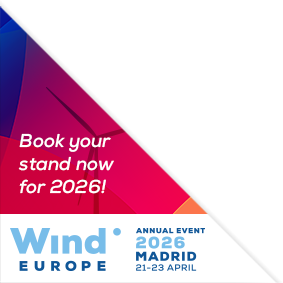Posters
Siblings:
ProceedingsProgrammeSpeakersPostersContent PartnersPowering the Future stageMarkets TheatreStudent programmeResearch & Innovation in actionProgramme Committee & abstracts reviewersPresenters’ dashboardCome meet the poster presenters to ask them questions and discuss their work
We would like to invite you to come and see the posters at our upcoming conference. The posters will showcase a diverse range of research topics, and will give delegates an opportunity to engage with the authors and learn more about their work. Whether you are a seasoned researcher or simply curious about the latest developments in your field, we believe that the posters will offer something of interest to everyone. So please join us at the conference and take advantage of this opportunity to learn and engage with your peers in industry and the academic community.
On 9 April at 17:15, we’ll also hold the main poster session and distinguish the 7 best posters of this year’s edition with our traditional Poster Awards Ceremony. Join us at the poster area to cheer and meet the laureates, and enjoy some drinks with all poster presenters!
We look forward to seeing you there!

PO142: Interrogating Wind from Space: Best Practices for Earth Observation in the Wind Energy Industry
Peter Coogan, Senior Earth Observation Scientist, TechWorks Marine
Abstract
Renewable sources of energy are necessary globally for sustainability and energy independence. Wind energy has been one of the most important drivers of the growth in the global clean energy sector, with 906 GW of installed wind capacity as of 2022. Installing more wind capacity relies on valid and verified wind resource assessments - from as many reliable data sources as possible. The economic value of a wind farm project is dependent upon the wind resources available, but this information can be difficult to accurately assess. This study will determine Best Practices for using Earth Observation (EO) methodologies and technologies in the wind energy sector. Our study is funded by the European Space Agency, who through the Copernicus Programme, enable the study of oceanographic patterns and parameters at large scales over long periods of time with high spatial and temporal resolution. While EO technologies can provide pivotal data for the wind energy sector, it is not being used to its full potential. This study seeks to address the needs of the wind energy sector, the current capabilities of EO technologies in supporting these needs, and any gaps that currently exist between existing technologies and needs for the next five years. Information requirements of the wind energy sector have been identified by members of the wind energy sector at different levels, and assembled in a geoinformation requirements. Next, an advanced analysis of current EO capabilities outlines the most up-to-date satellite constellations, processing methodologies, and EO data products that are available. We relate these EO capabilities to the information requirements of the geoinformation requirements. Finally, a gap analysis report has determined which EO technologies are not yet able to assist the sector, and consolidates responses from members of the wind energy industry.



